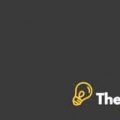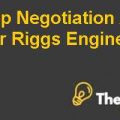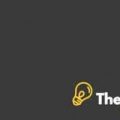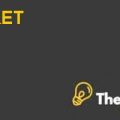Reverse Mergers Case Study Solution
Reverse Mortgage:
Reverse mortgage is a term of loan that is used to reflect the mortgage loan over the residential property, which provide the permits to the borrowers to find the value of the property. The terms and conditions associated with the loan owners are considered to give loan to the old home owners in which monthly or yearly installment and repayment of principle are not required. The person who takes the reverse mortgage is responsible to pay the property taxes and insurance premium on yearly basis. Acquirer of reverse mortgage cannot sell his residence until and unless the full payment of reverse mortgage.
As it is known that there is no requirement of monthly and yearly payment of reverse mortgage, the annual interest is added back to the principal amount, which ultimately increases the principal value for the acquirer of reverse mortgage at the time of repayment. The reverse mortgage contains the non-recourse nature of loan in which borrower will not be liable to pay any additional amount more than the value of the residential property in case of decline of the value of residential property below than the reverse mortgage.
Eligibility and Rules for Reverse Mortgage:
Reverse mortgage are regulated by the Responsible Lending Laws the National Consumer Credit Protection Act, which requires the high level of compliance and disclosures form the borrowers as well as the creditors of the residential property along with all advisors to borrowers. Borrowers hire specialists for getting an expert’s advice before applying for the reverse mortgage. In which any one involved in the reverse mortgage needs to take license from ASIC or must be the representative of someone who has the license holder from ASIC. Below mentioned requirements are the eligibility criteria that are required by the creditors in the acquirer of reverse mortgage.(Loftsgordon, 2018).
- The age of the borrower must be over the certain age limit. Usually the age limit is 60 to 65 years. If there are the multiple borrowers of reverse mortgage than the youngest borrower of reverse mortgage must meet the mentioned age limit to get reverse mortgage.
- The acquirer of the loan must be the owner of the property, and the value of the residential property must be the higher than the reverse mortgage value. This is the secured loan that is backed by the residential property.
Reverse Mortgage Size and Cost:
The value of reverse mortgage must be less than fifty percent of the value of residential property, while the amount going to be lent through reverse mortgage is determined by the several factors, which are described below:(Reverse Mortgage Information, 2019).
- The age of the acquirer of reverse mortgage, which will increase the loan amount as the acquirer’s age increases by the specified age limit.
- Interest rates of the reverse mortgage.
- The value of the residential property at the time of the consideration of reverse mortgage size and cost.
- The current location of the residential property.
- The minimum and maximum length of the reverse mortgage along with the minimum and maximum offered price of reverse mortgage.
The 10 rules of reverse mortgages are described below:(Reverse Mortgage Basics – Qualifications, Minimum Age & More, 2019).
- The borrower’s age must be greater than 60, if there are multiple borrowers than the youngest borrower age must be greater than 60 years.
- There must be the significant equity at the residential of reverse mortgage acquirer.
- The acquirer must be living in the residential place.
- Before applying for the reverse mortgage, the acquirer must take the financial assessment for the purpose of observing the income and credit history of reverse mortgage.
- Acquirer of reverse mortgage should select one of the five payout options, which are lump sum, tenure, term, line of credit and modified tenure and modified term.
- Acquirer can use the proceeds from reverse mortgage as the interest and principle repayment to the creditor.
- Acquirer will receive some of the residential equity form the reverse mortgage.
- These reverse mortgages are not invented by the government of the United States. Thus, these reverse mortgages associate some risks with it.
- There is no requirement that the creditor will always be the bank. Some other investors can be the lender of these reverse mortgages.
- Critically analyze before applying for reverse mortgage as it may not be the solution of the borrower’s problem.
Advantages and Disadvantages of Reverse Merger:
Advantages:
- Reverse mergers gives permit to the private operating company to convert its status to public operating company without raising any additional capital and making the Initial Public Offering (IPO). Furthermore, the IPOs take several months to raise capital while reverse mergers and acquisitions take just few weeks to complete. This time period helps to save the management’s valuable time and cost for the company, which can be reinvested in other potential opportunities for the company to increase the shareholders’ wealth.(DUMONT, 2019).
- In an IPO, there is no guarantee that company will go public, because if the company will have to face the under subscription situation then it will be an indication for the company that all the planning of management to go for public has been wasted. While reverse mergers and acquisitions help to minimize that risk by giving the guarantee to change its status from private to public within a month.
- Reverse management process is less dependent on stock market conditions, because it is operating as a sole mechanism to convert the company’s status from private operating entity to public operating entity.
Generally, to go for public, company’s essentials includes to make a proposal for attracting the public investors by showing them the future growth for the company and its potential opportunities. But the reverse mergers and acquisitions do not want these type of essentials. Once the reverse merger happens, the company can freely trade its securities in the United States’ capital market, and can enjoy the greater liquidity of its securities. The freely and continuously trading of company’s securities in the US’s capital market will lead to the increase in the value of the company’s securities...............
This is just a sample partical work. Please place the order on the website to get your own originally done case solution.











